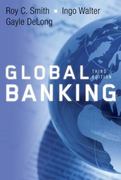Question
Traid Winds Corporation, a firm in the 32 percent marginal tax bracket with a required rate of return or discount rate of 12 percent, is
Traid Winds Corporation, a firm in the 32 percent marginal tax bracket with a required rate of return or discount rate of 12 percent, is considering a new project. This project involves the introduction of a new product. The project is expected to last 5 years and then, because this is somewhat of a fad product, it will be terminated. Given the following information, determine the free cash flows associated with the project, the project's net present value, the profitability index, and the internal rate of return. Apply the appropriate decision criteria.
Use the simplified straight-line method over 5 years. It is assumed that the plant and equipment will have no salvage value after 5 years. $14,400,000 Shipping and installation costs: $220,000 Unit sales: Year Units Sold 1 85,000 2 110,000 3 110,000 4 95,000 5 85,000 Sales price per unit: $330/unit in years 1 through 4, $280/unit in year 5 Variable cost per unit: $160/unit Annual fixed costs: $750,000 Working-capital requirements: There will be an initial working capital requirement of $160,000 to get production started. For each year, the total investment in net working capital will be equal to 12 percent of the dollar value of sales for that year. Thus, the investment in working capital will increase during years 1 through 3, then decrease in year 4. Finally, all working capital is liquidated at the termination of the project at the end of year 5. The depreciation method: Use the simplified straight-line method over 5 years. It is assumed that the plant and equipment will have no salvage value after 5 years.
Determine the free cash flows associated with the project.
The FCF in year 0 is (Round to the nearest dollar.)
The FCF in year 1 is (Round to the nearest dollar.)
The FCF in year 2 is (Round to the nearest dollar.)
The FCF in year 3 is (Round to the nearest dollar.)
The FCF in year 4 is (Round to the nearest dollar.)
The FCF in year 5 is (Round to the nearest dollar.)
b.The net present value (NPV) of the project is (Round to the nearest dollar.)
c.The profitability index (PI) of the project is (Round to three decimal places.)
d.The internal rate of return (IRR) of the project is (Round to two decimal places.)
e.Should Traid accept this new project? (Select the best choice below.)
A. No. The project should be rejected because its NPV is negative, the PI is less than one, and the IRR is less than the required rate of return,10%.
B. Yes. The project should be accepted because its NPV is positive, the PI is greater than one, and the IRR is greater than the required rate of return,10%.
C. Yes. The project should be accepted because its NPV is positive, the PI is less than one, and the IRR is less than the required rate of return,10%.
D. More information is needed to make this decision.
Step by Step Solution
There are 3 Steps involved in it
Step: 1

Get Instant Access to Expert-Tailored Solutions
See step-by-step solutions with expert insights and AI powered tools for academic success
Step: 2

Step: 3

Ace Your Homework with AI
Get the answers you need in no time with our AI-driven, step-by-step assistance
Get Started


